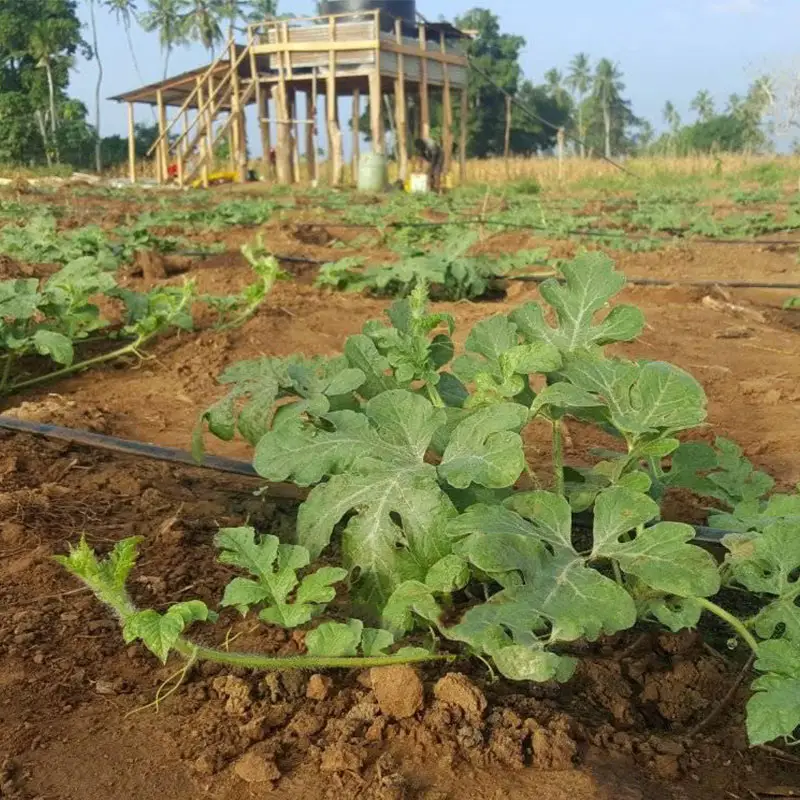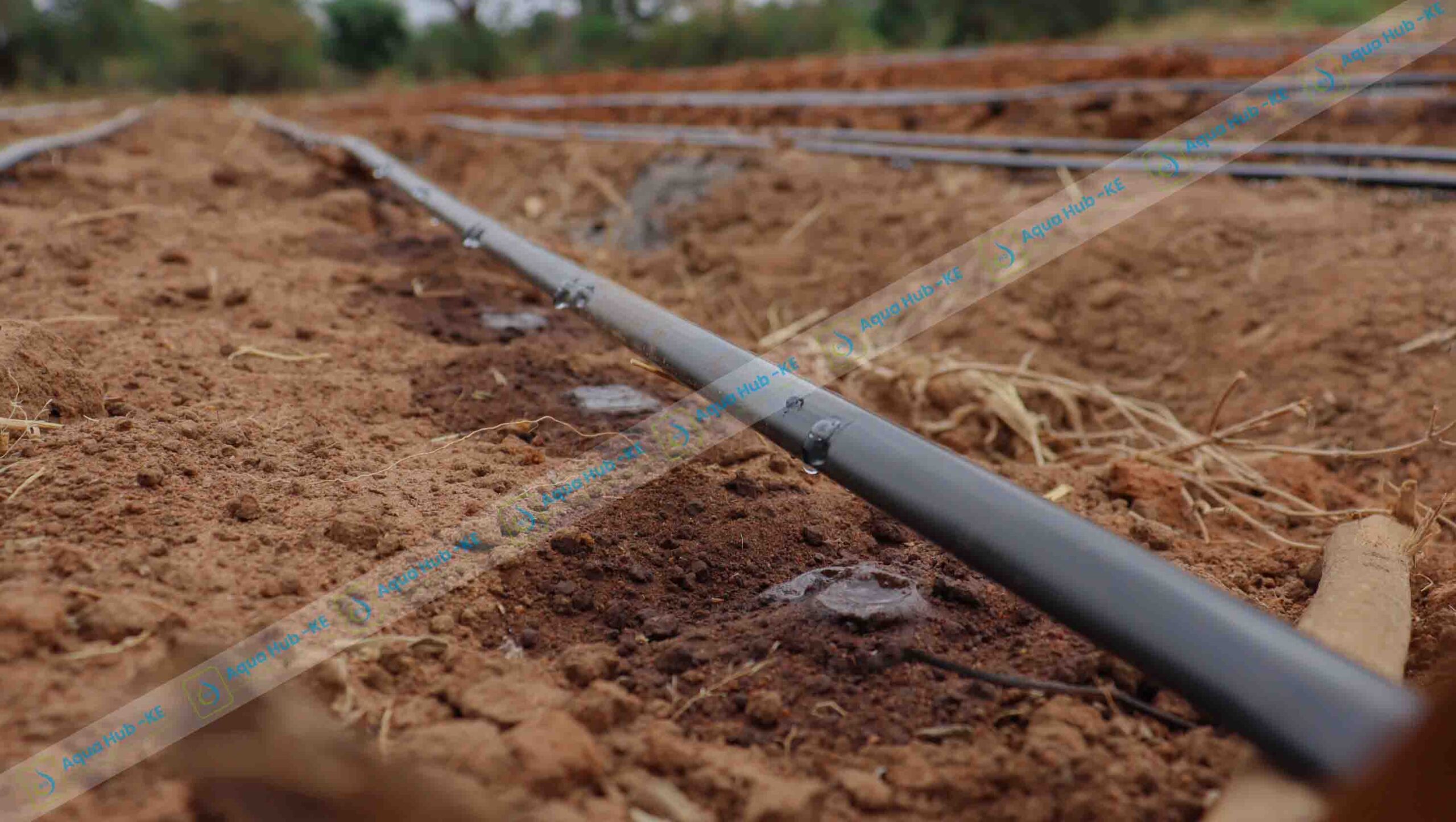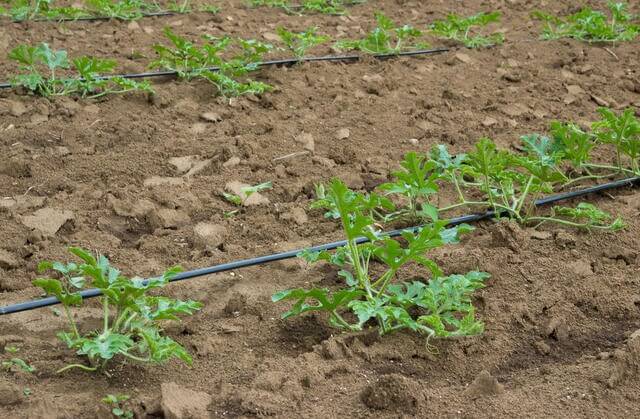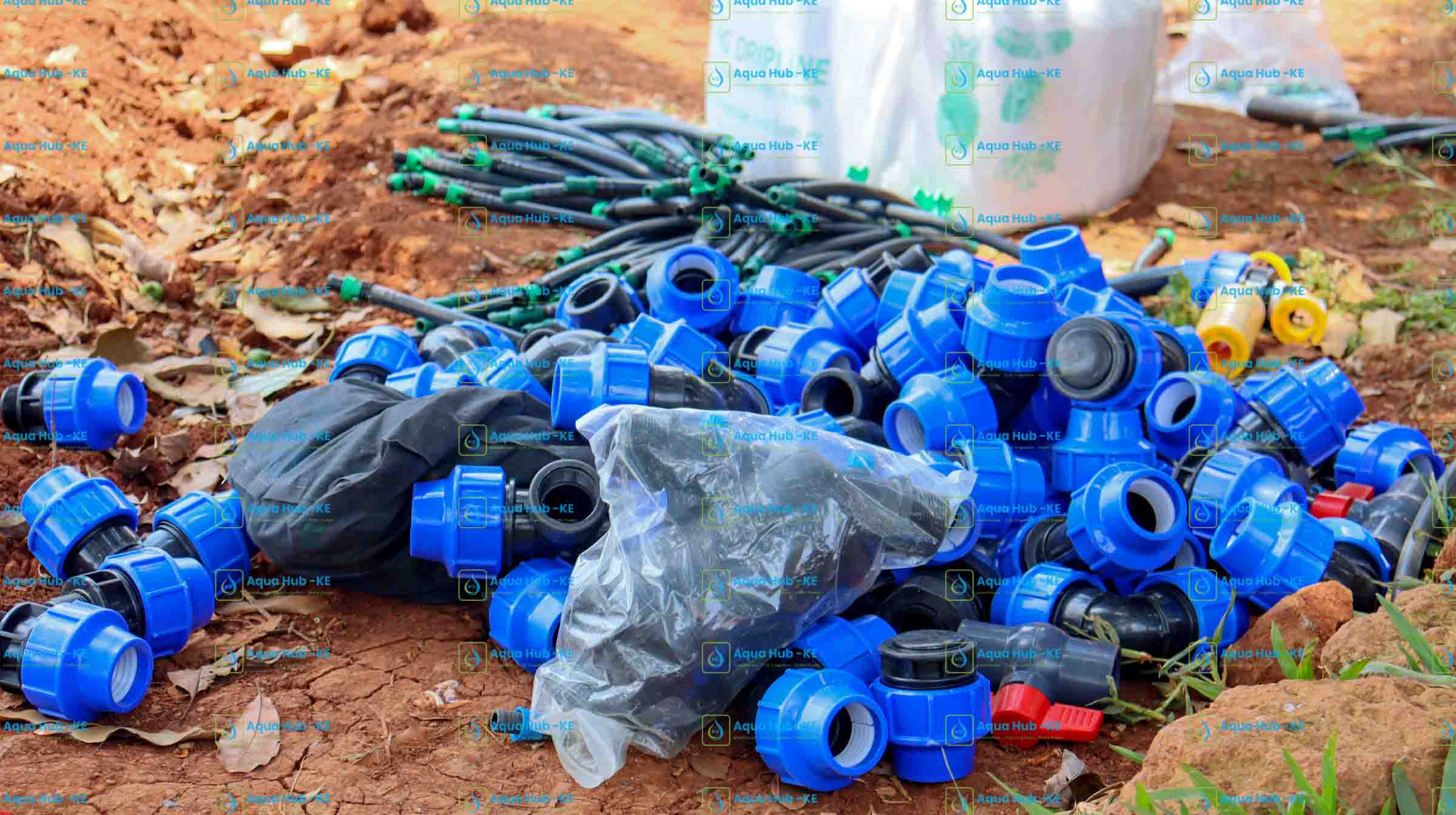Blog
Watermelon Farming and Irrigation in Kenya

Watermelon farming in Kenya is now grown year-round because of its profitability and popularity. Watermelon is an annual plant that produces large juicy fruits which are sweet and fleshy. Growing watermelon is a good farming venture because it requires minimal management and at the same time has high market potential.
Buy Watermelon Drip Kits from Aqua Hub
At Aqua Hub LTD, we supply quality drip kits which are popular irrigation solutions for watermelon farming in Kenya. Our drip kits come with driplines of either 15, 20 and 30 cm emitter spacing. The ideal dripline for watermelon is the double emitter dripline of 30 cm spacing.
Call 0790719020

Watermelon Farming in Kenya
Kenya’s warm temperature is suitable for growth and thriving of watermelon varieties.
Watermelon cultivation is commonly done in hot areas such as Machakos, Makueni, Kajiado, Baringo and Kitui.
Benefits of Watermelons
- Rich in lycopene, a potent antioxidant known for its effectiveness in preventing certain types of cancer and cardiovascular illnesses.
- Rich in Vitamins A, C, and B6.
- High in potassium, which aids in managing blood pressure and reducing the risk of strokes.
- Helps improve hydration levels in the body especially during summer heat.
- Abundant in folate, amino acids, and other beneficial elements.
- Reduced in calories
Conditions for Watermelon Farming
- Soil – watermelon do well in well drained soil with high fertility and slightly alkaline PH.
- Temperature – the ideal temperature for cultivation of Watermelon is between 15° – 30° C.
- Altitude – the reliable altitude is below 1500 m above sea level.’
- Water – 600 mm rainfall annual rainfall per crop.
Popular Watermelon Varieties in Kenya
Common watermelon varieties grown in Kenya include:
- Sukari F1
- Zuri F1
- Kubwa F1
- Sugar Baby
- Crimson Sweet
- Sweet Rose F1
Land Preparation for Watermelon Farming
Proper Land Preparation is the first step when cultivating watermelon. You need to clear weeds, bushes or other vegetation to pave clear areas to grow the watermelon seeds. If the weeds are less stubborn, you can spray with herbicides such as Catapult 480SL.
After the land is clear, plough the land while ensuring the soil is depth of about 30 cm.
Incorporate compost manure at a rate of 5 – 8 tons per acre to enhance the soil.
Cultivation Techniques Best for Watermelon Farming
Propagation of watermelons is done by planting the seeds directly in the soil. It can also be done through propagation of seeds in seedbeds or shade houses and then later transplanting to the field.
Transplanting requires careful approach when uprooting and planting the seedlings as it can cause root system interference if you do it carelessly.
Watermelon plants take a spacing of 60 cm for plants in a planting line and about 2 m row spacing. Seeds are propagated in holes, often 3 cm deep.
Tips for Effective Cultivation of Watermelon
- Grow certified watermelon seeds.
- Seeds immersed in OPTIMIZER® 20ml/1L overnight before planting germinate more uniformly and quickly
Duration for Maturity of Watermelons
Watermelons take 3 – 4 months before the fruits are ready for harvesting.
Drip Irrigation Schedule for Watermelons
It good to water your melons in the morning hours to limit the chances of fungal infection rates.
The most appropriate irrigation frequency is 3 – 4 times depending on the growth stage. Once fruit formation begins, reduce irrigation rates to prevent fruit cracking.
Why Irrigation is Essential in Watermelon Farming
As mentioned, watermelon does well in areas with low rainfall, which often experience long periods of dry conditions. When dry conditions prolong, it affects the watermelon cultivation propagation or even result to lower yields. Irrigation farming is therefore the ideal solution to ensure year-round and high yield of the crop even in dry seasons.
How to Conduct Irrigation in Watermelon Farming

Irrigation of watermelon is critical especially between the planting and onset of fruit development. The most effective way to irrigate watermelon plants is by using drip irrigation method. With drip irrigation, every watermelon plant receives equal amount of moisture at the root zone in slow adequate rates.
Drip irrigation uses driplines connected to a bunch of HDPES mainline and sub mainline pipes to distribute water to watermelon plants. Because crop growing is in rows, the method works perfectly using less water. Slow water usage and high-water saving capacity are advantages in such regions with scarce water access.
In general, irrigation of watermelons using drip kits lowers the fungal infections while also promoting water efficiency and conservation.
Drip Irrigation Kits | Ideal Irrigation for Watermelon Farming

To set up a complete up and working drip irrigation system for distribution water to your watermelon plants, you need:
- Water Tank or Adequate water supply – a water tank is ideal so that you have a surplus water storage. Size depends on your farm extent or acreage.
- HDPE Pipes – ideal pipes to distribute water from the source tank to the farm sections. Often the farm will be divided into sections for easier and uniform irrigation, each section needs sub mainline pipes to deliver water from mainline pipe.
- PE lateral pipe – applicable for delivering water from buried sub mainline pipes to the driplines.
- Driplines – the actual delivery pipe laid on the plant lines. It has uniformly spaced emitter holes that drip irrigate crops.
- Connectors – various pipe connectors such as HDPE tee, elbow, drip start, middle and end plugs.
- Ball Valves – controls the water flow rates entering various farm sections.
- Fertilizer kit – fertilizer application is effective with use of fertilizer injection kit. Minimizes fertilizer waste often occurs in manual applications.
Sukari F1 Watermelon Yield Per Acre
It can generate 15 to a maximum of 25 tons per acre when proper maintenance and right growing conditions are met.
Harvesting of Watermelons
Watermelon is ready for harvesting once the color of the fruit changes from dark green to lighter. Tendrils also dry in most varieties. You should consider these key identifications to ensure you harvest fresh and ripe fruits. Late harvest often leads to harvesting rotten or fruits that have changed taste.
Fertilizer Input
- Prior to planting, it is crucial to spread manure on well-prepared soil and thoroughly incorporate it.
- Apply NPK fertilizer during the planting process.
- Four weeks after planting, apply fertilizer rich in nitrogen and phosphorus, like DAP, to ensure sufficient nutrients.
- Foliar feeds may be used when the plants enter the flowering phase.
